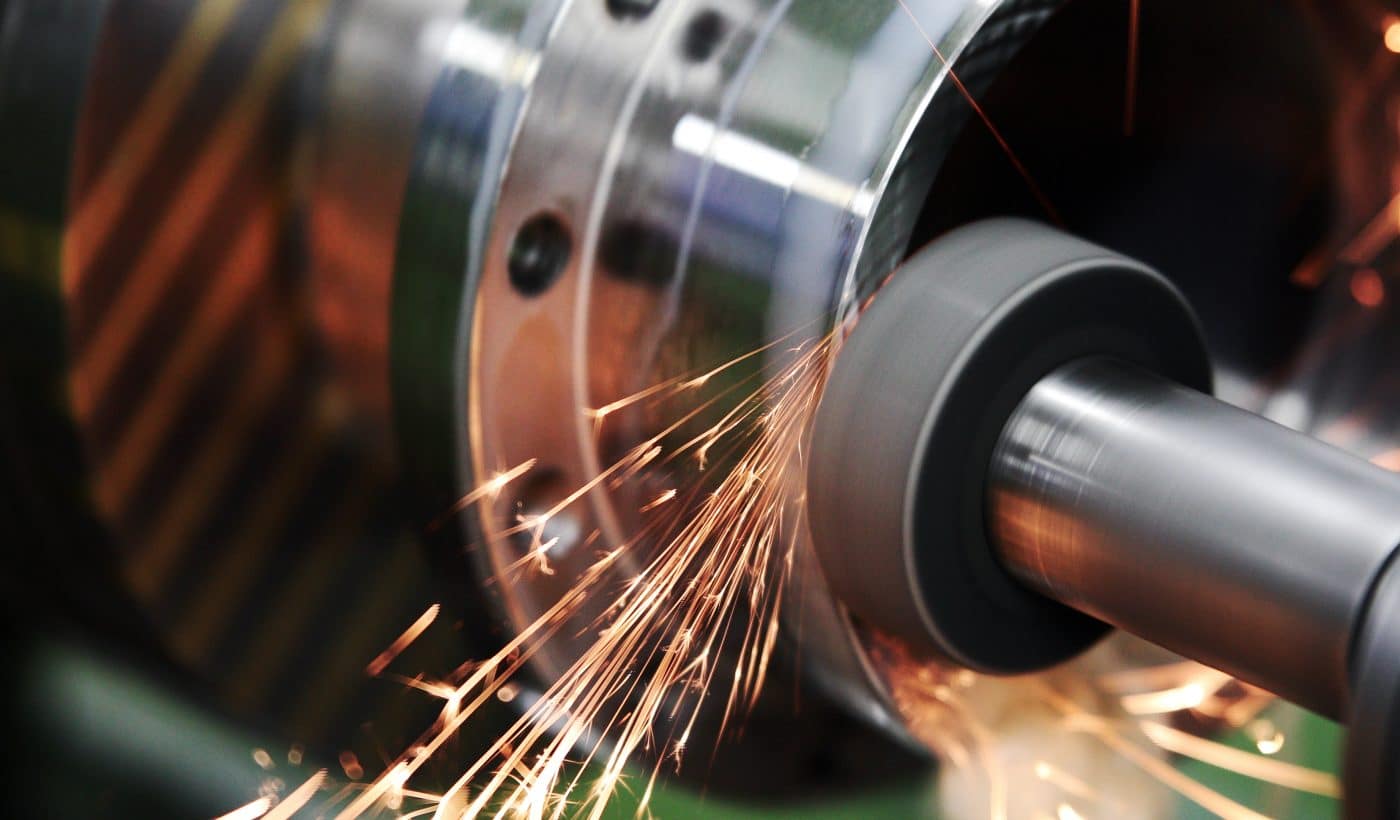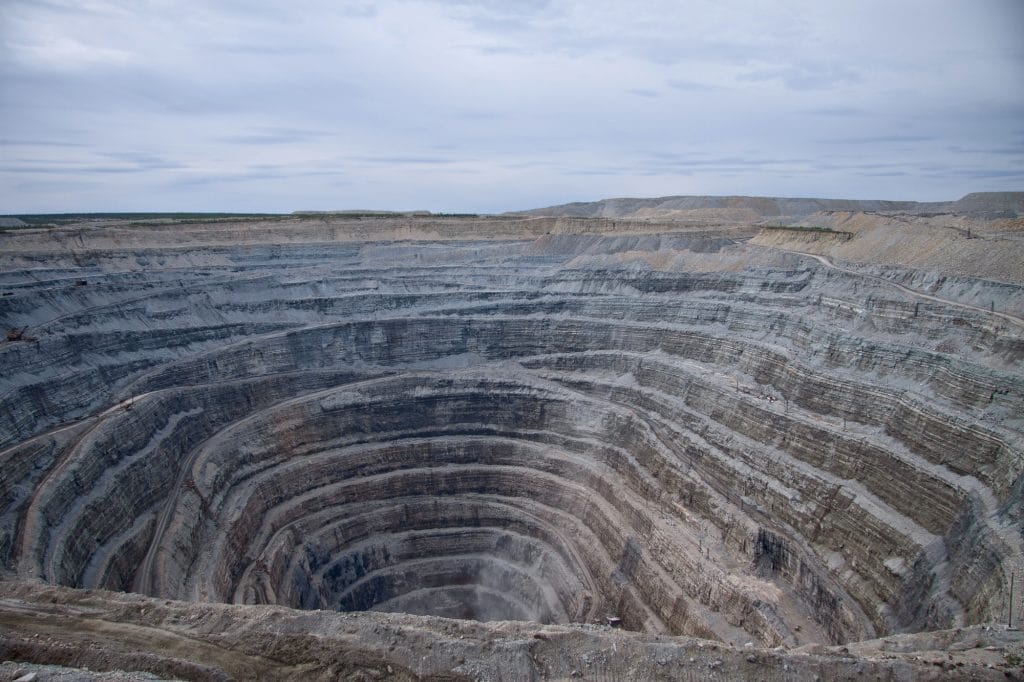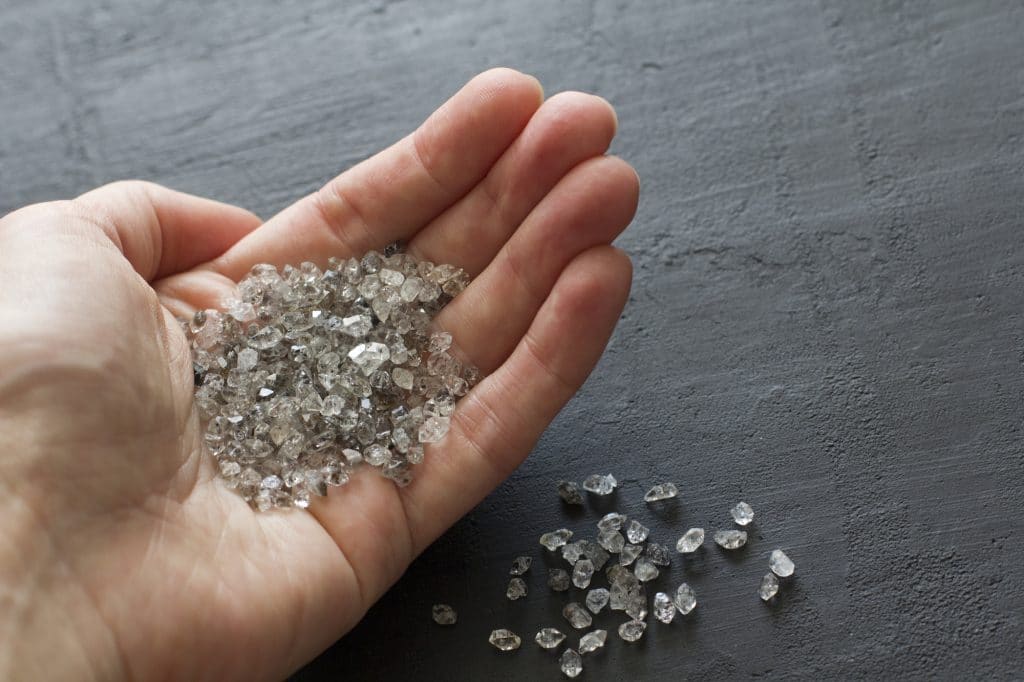
We’ve all heard that diamonds are the hardest material on Earth, but how do synthetic diamonds stack up? Can synthetic diamonds really match natural diamonds and their ability to cut and grind other incredibly hard materials?
The answer turns out to be a resounding yes!

Diamonds – The Hardest Material?
Whether or not diamonds are actually the hardest materials found on the planet might still be up for debate, depending on what definition of “hardest” you want to use.
What’s not up for debate is that naturally occurring diamonds are incredibly strong and extremely scratch-resistant. This is all due to the molecular structure of a diamond. Diamonds are a solid form of carbon, a repeating pattern of 8 atoms known as a diamond cubic crystal structure.
In 1822, German geologist and mineralogist Friedrich Mohs developed the Mohs Scale of Mineral Hardness. This scale looks at the ability of harder materials to scratch softer materials, ranking minerals on a scale from 1 to 10, with 1 being the softest and 10 being the hardest.
The scale has several key uses. For example, field geologists can use the scale to quickly identify a substance by seeing which known minerals can scratch the unknown material. The scale is also useful in milling to help quickly identify what type of tool is needed to cut a product.
Diamonds are at the top of the Mohs scale, with a rank of 10.
In 1921, another test was developed to try and measure the hardness of various materials. The Vickers Hardness Test works by applying a specific amount of force for a specific amount of time and measuring the indentation left behind. Once again, diamonds top the list of naturally occurring elements based on the Vickers Pyramid Number (HV).
In fact, the tool used to create the indentation during the Vickers Hardness Test (which needs to be able to withstand a massive amount of force without breaking or changing shape) is often a diamond shaped like a square-based pyramid.

The Problem With Natural Diamonds
Naturally occurring diamonds take a long time to be created, somewhere around 1 billion years. They’re formed deep in the Earth, under high temperatures and intense pressure. They are also extremely rare, and costly to mine and produce.
Because of this, scientists spent decades searching for ways to artificially create a man-made diamond. Scientists were working on a solution as far back as the 1800’s, but it wasn’t until the 1950’s that a method of making synthetic diamonds was confirmed.
When you think of man-made diamond alternatives, arguably the most popular (and the first one many will likely think of) is cubic zirconia. Cubic zirconia is the low cost synthesized material that looks strikingly similar to diamond gemstones, making it a popular diamond alternative in jewelry.
But while cubic zirconia looks the same as natural diamond, it is not structurally the same at all. It’s not made from carbon like a diamond is, and while it is very hard compared to other minerals (it’s around an 8.0 on the Mohs scale) it is nowhere near as hard as diamond.
Thankfully, when we refer to synthetic diamonds, or man-made diamonds, we are not talking about cubic zirconia.

Synthetic Diamonds Are Physically The Same As Natural Diamonds
Unlike cubic zirconia and other types of diamond simulants, synthetic diamonds are chemically and physically identical to natural diamonds. Man-made diamonds are so similar to natural diamonds that it takes an expert using specialized equipment to be able to accurately distinguish between the two. And in fact, some synthetic diamonds are even harder and stronger than natural diamonds.
There are multiple ways synthetic diamonds are made. High Pressure, High Temperature (HPHT) tries to mimic the way natural diamonds are formed in the earth. The Chemical Vapor Deposition (CVD) method puts a carbon-rich gas into a vacuum chamber, breaking the gas down to individual atoms.
Both methods take the natural process, which can take a billion years or more to produce a diamond, and produce the same results in a matter of weeks.

Benefits Of Synthetic Diamonds When Grinding
Almost immediately after synthetic diamonds were first made, the new material was being used in a wide array of industrial applications.
Using diamond as an abrasive to grind away or polish even the toughest materials quickly became the standard. The ability for synthetic diamonds to be quickly and relatively cheaply produced, while still having the same or sometimes better physical qualities as natural diamonds, made it easy for the industry to quickly adopt this new material.
Our diamond tools are being used every day in the automotive, aerospace, and energy industries. Our diamond discs can be customized to any customer’s needs, have a consistent and long-lasting grind that boosts production and increases efficiency for workers, and can be used on a variety of materials from ceramic to metal. And our diamond reamers are precision accurate to the ten-thousandth (0.0001) of an inch, allowing for cleaning or clearing extremely small holes without contaminating or tainting other parts.
If you have further questions about whether or not synthesized diamonds are the right solution for your problem, or you want to explore testing out one of our diamond tools, send us a message. We love to meet and connect with businesses and find ways for us to solve your problems.
